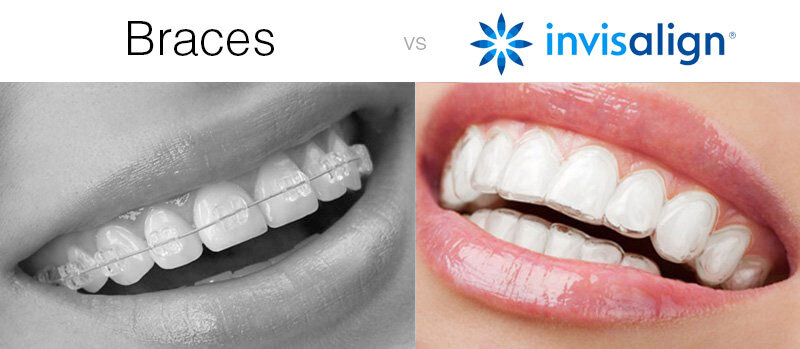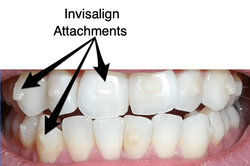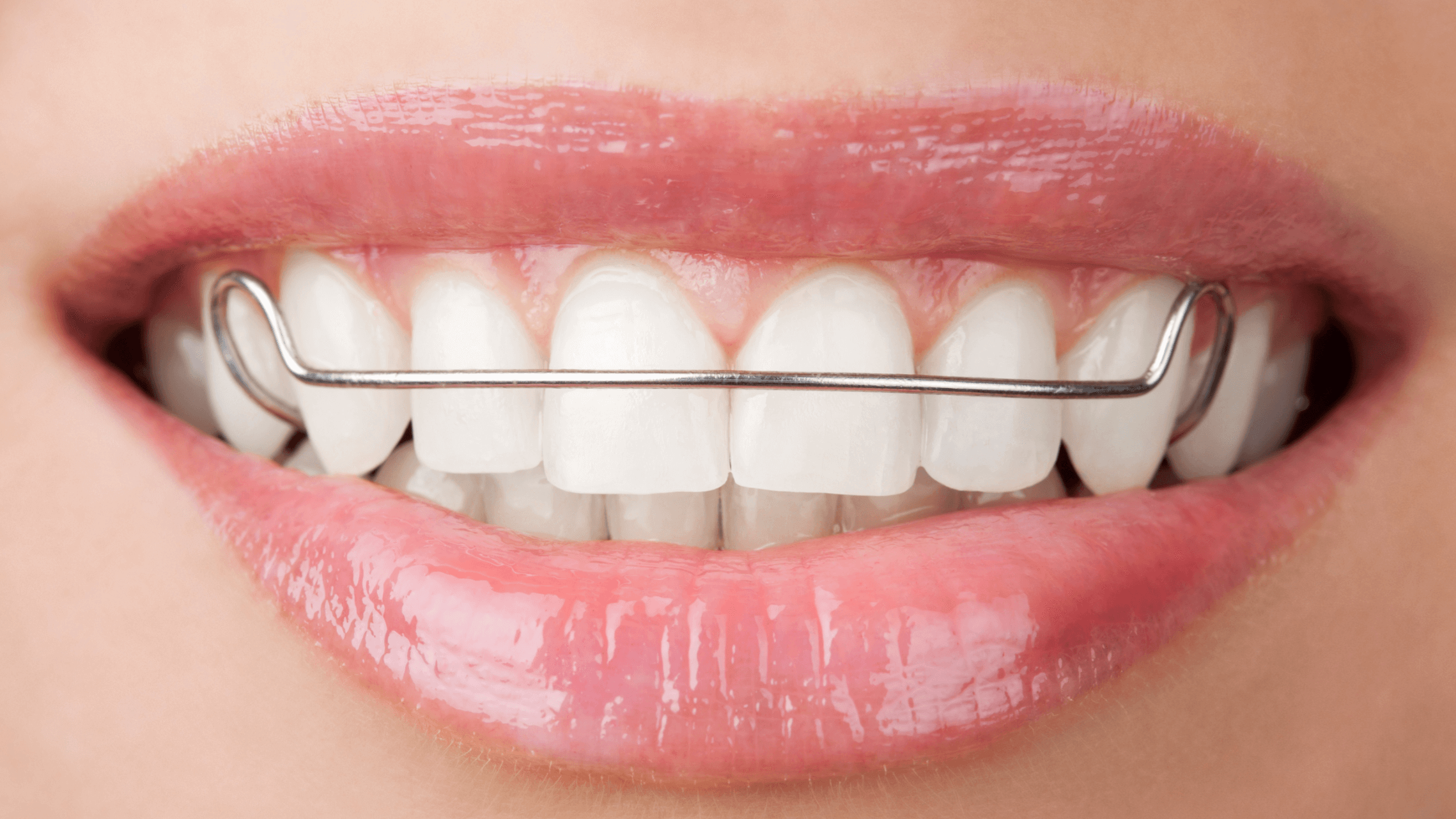Discover the Perks of Invisalign for a Perfect Smile Makeover
Discover the Perks of Invisalign for a Perfect Smile Makeover
Blog Article
Invisalign vs. Standard Braces: Which Alternative Is Right for You?
When considering orthodontic therapy, the selection in between Invisalign and typical braces provides numerous essential aspects that merit mindful evaluation. Invisalign supplies a discreet choice with detachable aligners, while standard braces give an extra noticeable yet efficient solution for serious imbalance.
Overview of Therapy Choices

On the other hand, traditional dental braces contain steel braces and cords that are bonded to the teeth. This approach applies constant pressure over time to achieve positioning. While efficient for complex orthodontic concerns, traditional dental braces require regular check outs for adjustments and can present obstacles in maintaining oral hygiene due to the problem of cleaning around cables and brackets.
Both alternatives have their advantages, and the choice frequently depends upon particular dental problems, way of living preferences, and person conformity. Eventually, speaking with an orthodontic professional is essential for determining the most appropriate treatment plan customized to specific requirements. Recognizing the subtleties of each alternative can considerably affect the overall success of orthodontic treatment.
Aesthetic Considerations
A substantial variable influencing the option in between Invisalign and conventional braces is the aesthetic charm each treatment uses. Invisalign aligners are crafted from clear plastic, making them virtually unnoticeable when used.
In comparison, standard dental braces are composed of metal braces and cords, which can be extra recognizable. While developments in orthodontic innovation have actually brought about the development of smaller braces and tinted elastics, typical braces still maintain an even more noticeable profile. For some people, the presence of dental braces may deter them from looking for required treatment.
Ultimately, the option between Invisalign and standard braces might depend upon individual preferences relating to aesthetic appeals. Clients that focus on discernment commonly favor Invisalign, while those that are much less worried concerning visibility may go with traditional dental braces. Understanding the visual ramifications of each choice is essential for making an informed choice that straightens with one's way of life and choices.
Comfort and Convenience

In regards to convenience, Invisalign aligners are detachable, allowing clients to appreciate their preferred foods without restriction and preserve optimum dental health. Brushing and flossing are streamlined, as the aligners can be obtained throughout these routines, whereas standard dental braces need mindful navigating around cords and brackets.
Additionally, Invisalign's modern system allows for fewer orthodontic check outs. Patients typically get multiple collections of aligners simultaneously, which can simplify the treatment process and lower time spent in the orthodontist's chair. In comparison, traditional dental braces necessitate routine changes, making them less hassle-free for those with hectic schedules. Invisalign. In general, the convenience and convenience of Invisalign make it an attractive choice for lots of people seeking orthodontic therapy.
Treatment Period and Performance
While both Invisalign and traditional dental braces work in remedying oral imbalances, the duration of treatment can differ dramatically between both options. Commonly, Invisalign treatment can take anywhere from 12 to 18 months, depending on the complexity of the situation. The clear aligners function by slowly shifting teeth right into their wanted positions, and regular follow-ups with an orthodontist aid make sure development read more remains on track.
On the other hand, typical braces often need a longer commitment, typically varying from 18 months to three years. This is because of their set nature and using braces and cables, which can be a lot more effective for serious imbalances and complex instances (Invisalign). The therapy performance of typical braces is well-documented, as they enable for specific changes and higher control over tooth motion
Eventually, the choice in between Invisalign and standard braces may rest on both the expected therapy period and the details oral concerns at hand. Consulting with an orthodontist is critical, as they can supply tailored referrals based on individual demands, guaranteeing the chosen method aligns with desired timeframes and outcomes.
Cost Contrast and Insurance Policy Choices
Price Get the facts plays a substantial duty in the decision-making procedure for people thinking about orthodontic treatment, whether selecting Invisalign or traditional braces. On average, the cost of Invisalign arrays from $3,000 to $8,000, while traditional dental braces commonly cost between $2,000 and $6,000. Variables influencing these expenses include the complexity of the instance, the duration of therapy, and geographical area.
Numerous dental insurance policy strategies give partial insurance coverage for orthodontic treatments, yet the specifics can differ commonly. Normally, traditional braces might be much more often covered by insurance policy plans compared to Invisalign, which some insurance firms categorize as a cosmetic procedure.
Furthermore, numerous orthodontic practices provide adaptable repayment plans, making both therapy options more available. People should ask about possible funding alternatives and price cuts for in advance payments. Assessing the total price, consisting of insurance policy advantages and settlement plans, is crucial for making an informed decision that straightens with both visual preferences and budget considerations.
&srotate=0)
Final Thought
In recap, the selection in between Invisalign and conventional braces hinges on multiple elements, including aesthetic choices, convenience, treatment duration, and price. Invisalign offers a discreet, removable option that promotes oral hygiene and dietary flexibility, while typical braces may be better for complex oral concerns and often come at a lower address price point. Inevitably, assessment with an orthodontist is necessary to assess specific scenarios and determine the most proper therapy alternative for attaining ideal dental positioning.
When taking into consideration orthodontic treatment, the choice between Invisalign and conventional dental braces offers a number of essential variables that merit mindful analysis.Comparing Invisalign and traditional braces discloses distinct treatment alternatives for orthodontic modification.While both Invisalign and conventional braces are efficient in remedying oral misalignments, the duration of therapy can vary significantly in between the 2 alternatives.Expense plays a substantial function in the decision-making process for individuals taking into consideration orthodontic therapy, whether choosing for Invisalign or typical braces.In recap, the option in between Invisalign and conventional dental braces hinges on multiple variables, including aesthetic choices, convenience, therapy duration, and cost.
Report this page